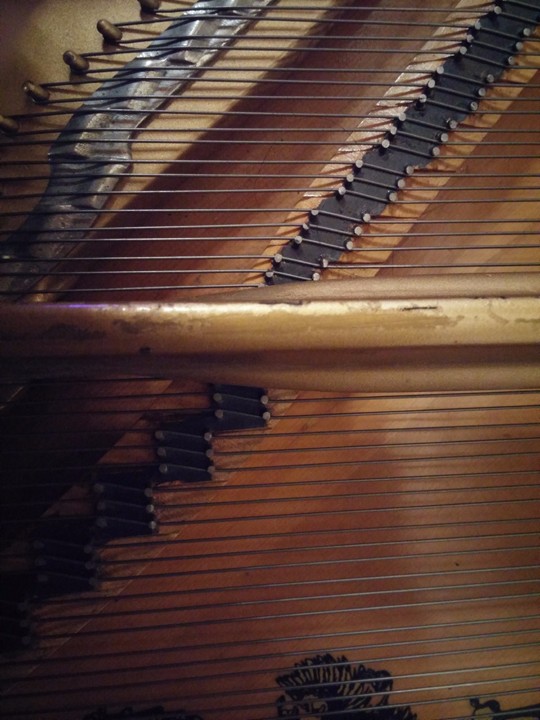I have only seen this on the Steinway Model C, and as mentioned, the Baldwin SD-6.
It can only be an attempt to force a slight phase difference into the unisons which does, in fact, increase the sustain of the notes. I can only surmise that there was a backlash from tuners complaining about it (and quite possibly a sales backlash as the competition pointed to it and addressed it as an attempt to cover up a basic design defect in the pianos).
When everything is new and beautiful, these can actually be tuned quite well. But as things age it seems to become more problematic. I remember seeing a beautifully restored C in which the rebuilder maintained the design. It sounded great. One would never know that the bridge was cut that way unless you saw it. The unisons sounded perfectly clear and nice.
It can also be argued that it was an experiment to see if greater unison stability could be reliably achieved throughout significant humidity changes.
I don't know!
BTW, the SD-6 was a real bear to tune.
Pwg
------------------------------
Peter Grey
Stratham NH
603-686-2395
pianodoctor57@gmail.com------------------------------
Original Message:
Sent: 11-28-2017 09:16
From: Zeno Wood
Subject: Steinway bridge question
It certainly doesn't make it any easier. This must be an older piano. I wonder when Steinway stopped doing that. I've seen it on a 1950s Baldwin 9-foot.
------------------------------
Zeno Wood
Brooklyn, NY
Original Message:
Sent: 11-28-2017 01:12
From: Geoff Sykes
Subject: Steinway bridge question
I see this on several models of Steinway but only today, out of frustration, thought to ask about it.

Notice that the bridge pins above the treble break are not square with the three strings in the trichord. What is Steinway trying to accomplish by creating a string pairing on a single note with three unequal length strings? Getting a clean unison is impossible. What does Steinway want us to do with this, and what is it that we should be trying to accomplish? In other words, how do I approach this situation knowing that it's not ever going to be clean? What, exactly, should I be listening for?
------------------------------
Geoff Sykes, RPT
Los Angeles CA
------------------------------